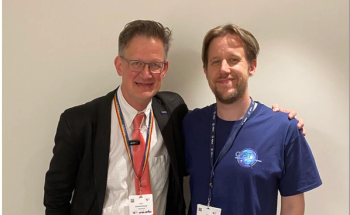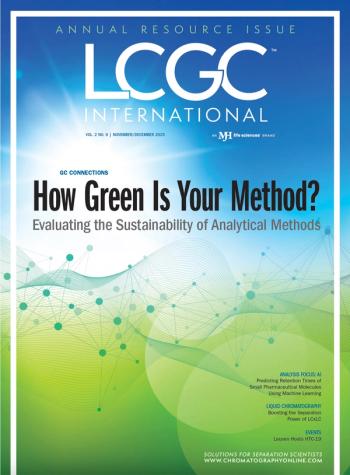
Preview: The Pittsburgh Conference Achievement Award
Paul S. Cremer will be presented with the Pittsburgh Conference Achievement Award. He is being recognized for contributions to the fields of analytical chemistry and applied spectroscopy.
Texas A&M University professor Paul S. Cremer will be presented with the Pittsburgh Conference Achievement Award on Monday morning at Pittcon 2006. He is being recognized for his significant contributions to the fields of analytical chemistry and applied spectroscopy over the past decade.
Cremer's laboratory utilizes nonlinear optical spectroscopy and fluorescence microscopy to investigate planar lipid bilayers. Phospholipid bilayers consist of two opposing leaflets of amphiphilic molecules. Bilayer materials can be deposited at the liquid-solid interface to form solid supported membranes that mimic cell surfaces and represent an ideal geometry for designing sensors and screening assays. Cremer recently has used microcapillary injection and photolithography to pattern membrane material into sensor arrays with unique chemical activity at each surface address.
Through infrared-visible sum frequency generation, a surface-specific vibrational spectroscopy, Cremer's laboratory obtains chemically specific information on membrane dynamics and structure. This technique allows the monitoring and characterization of membrane constituents and adsorbed components at surfaces and interfaces. Cremer's work has focused on dynamic processes that take place in solid supported membranes such as the flippase-induced transmembrane translocation of phospholipids and cholesterol-DLPC interactions.
Cremer received his doctorate in 1996 at the University of California, Berkeley where he characterized the hydrogenation and dehydrogenation of hydrocarbons on platinum surfaces with infrared-visible sum frequency generation. Between 1996 and 1998, Cremer was a postdoctoral fellow in surface science of supported lipid bilayers and biomembranes at Stanford University. In 1998, Dr. Cremer joined the faculty at Texas A&M University and was promoted to professor of the department of chemistry in 2004.
Cremer will be presented with the award during the symposium entitled "Pittsburgh Conference Achievement Award: Designing Sensors for Unraveling Biophysical Mechanism" arranged by and to be presided by Adrian C. Michael, associate professor of electrochemistry and bioanalytical chemistry at the University of Pittsburgh. The symposium will feature several presentations by prominent scientists including Cremer.
The Pittsburgh Conference Achievement Award is presented annually at Pittcon to an individual for significant achievements in the field of analytical chemistry within ten years following the completion of their doctorate degree. The Pittcon and the Society of Analytical Chemists sponsor the award.
Newsletter
Join the global community of analytical scientists who trust LCGC for insights on the latest techniques, trends, and expert solutions in chromatography.



